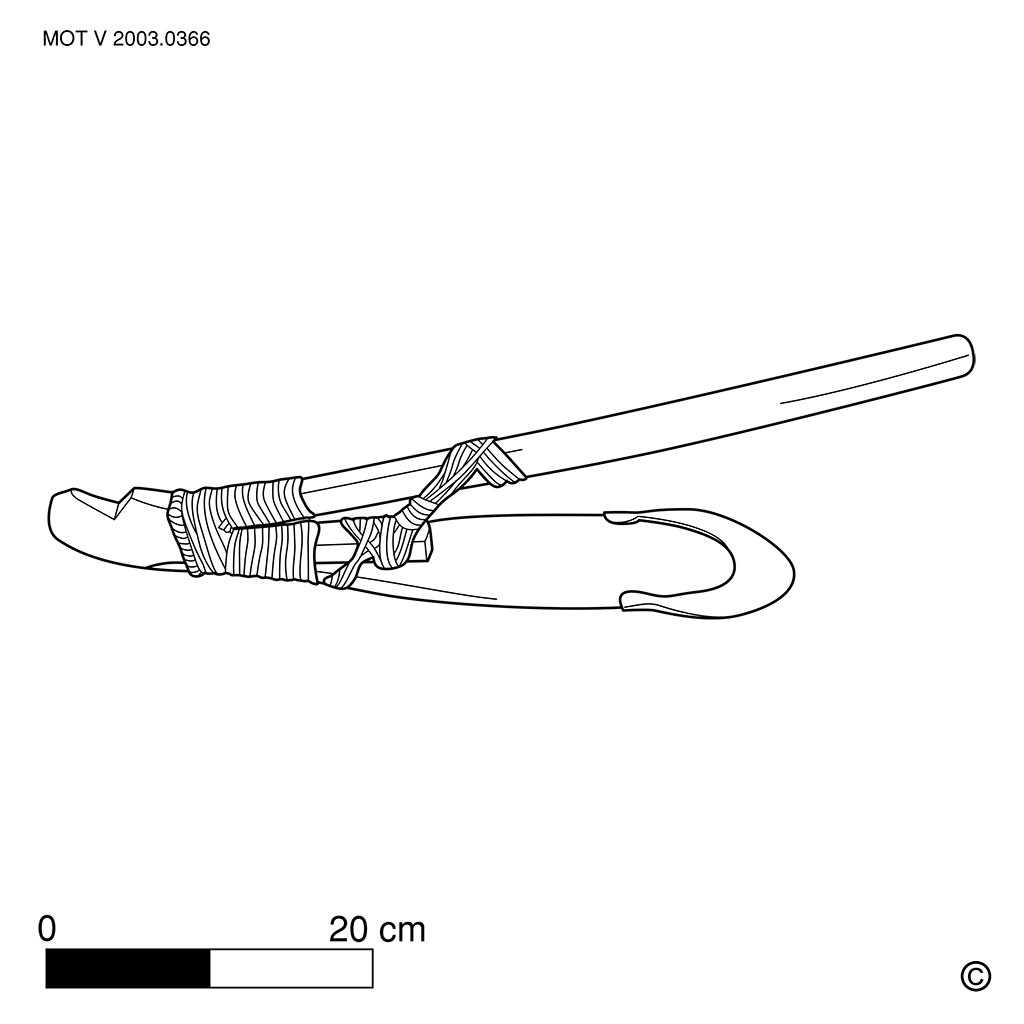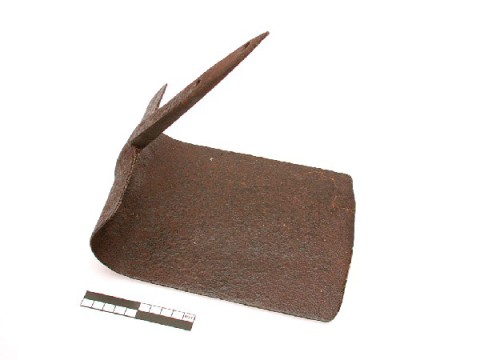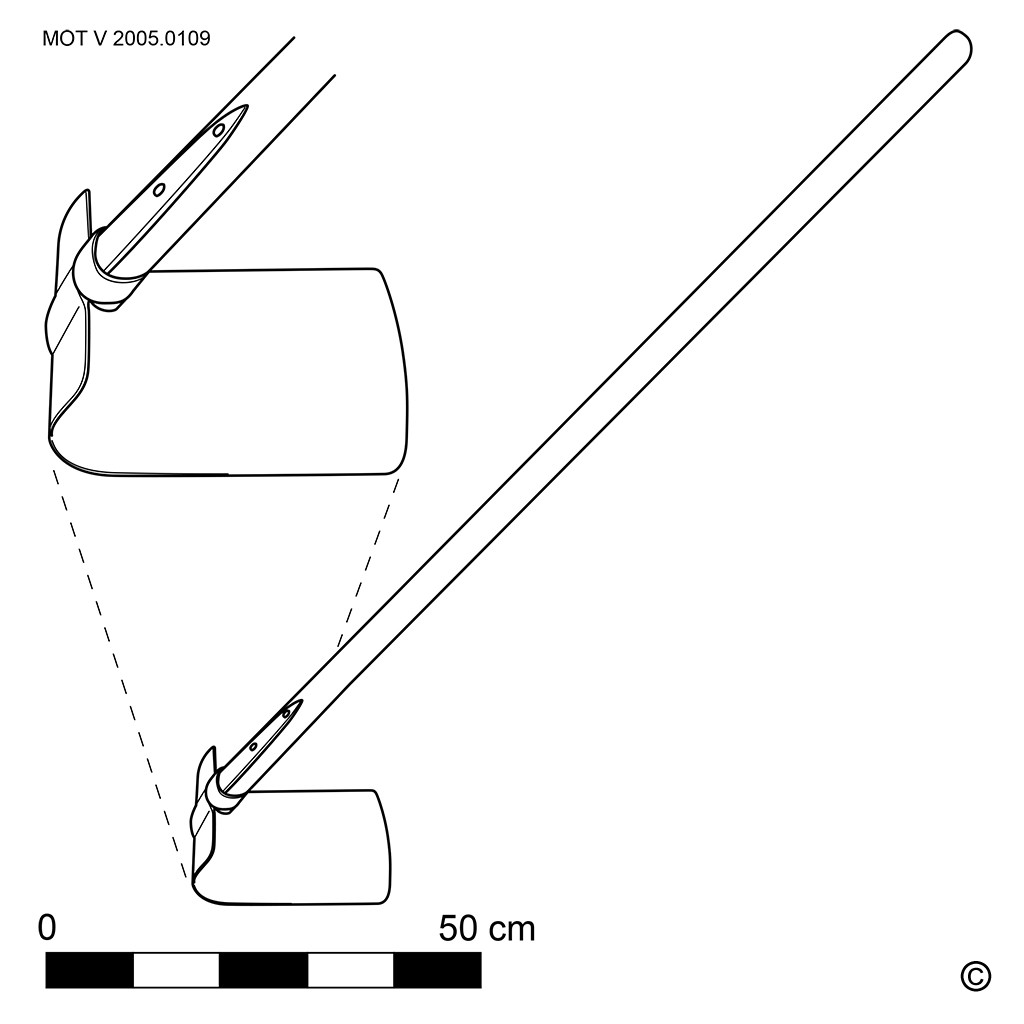Hoe
Agricultural and horticultural tool with a rectangular, semicircular, triangular or heart-shaped blade that lies diagonally opposite the wooden straight handle. The angle between blade and stem varies from 30 ° to 80 °. The blade can be covered with wood or iron. Usually the stem is half long (approx. 100-120 cm) and the hoe is used standing; however, there are also hoes with a shorter handle (approx. 50-60 cm) that require you to bend down or get on your knees (1).
Dimensions and weight vary greatly and are adapted to the destination. For example, chopping is used to work the soil, to ridge potatoes (see also hand ridger), to harvest potatoes (see also potato lifting fork and potato harvester), plant trees, dig trenches, etc.
Osiers and meadow farmers deepen and widen the trenches after each harvest (see this osier worker's tool) with a hoe. The handle (approx. 1 to 2 m) and blade are connected here by means of a D-shaped ring, a spring and a bolt. The cut is slightly curved. In the middle of the top a reinforcement is provided lengthwise. The worker works with this hoe from the ditch side. The cut of the blade is chopped across the bottom of the trench. The soil on the blade from the trenches and the mud from the ditches are often used as fertilizer in the osier work.
During mining, use is sometimes made of a composite hoe tool.
In principle, you hack with the hoe and do not pull like with the garden hoe or the weeding hoe.
See also the flat pick, two-toothed tools and pickaxe.
To be distinguished from the mortar hoe and the stable scraper. [MOT]
(1) Short-shanked hoes are typical of the regions around the equator, where they are mainly handled by women. They are also used to work on slopes.
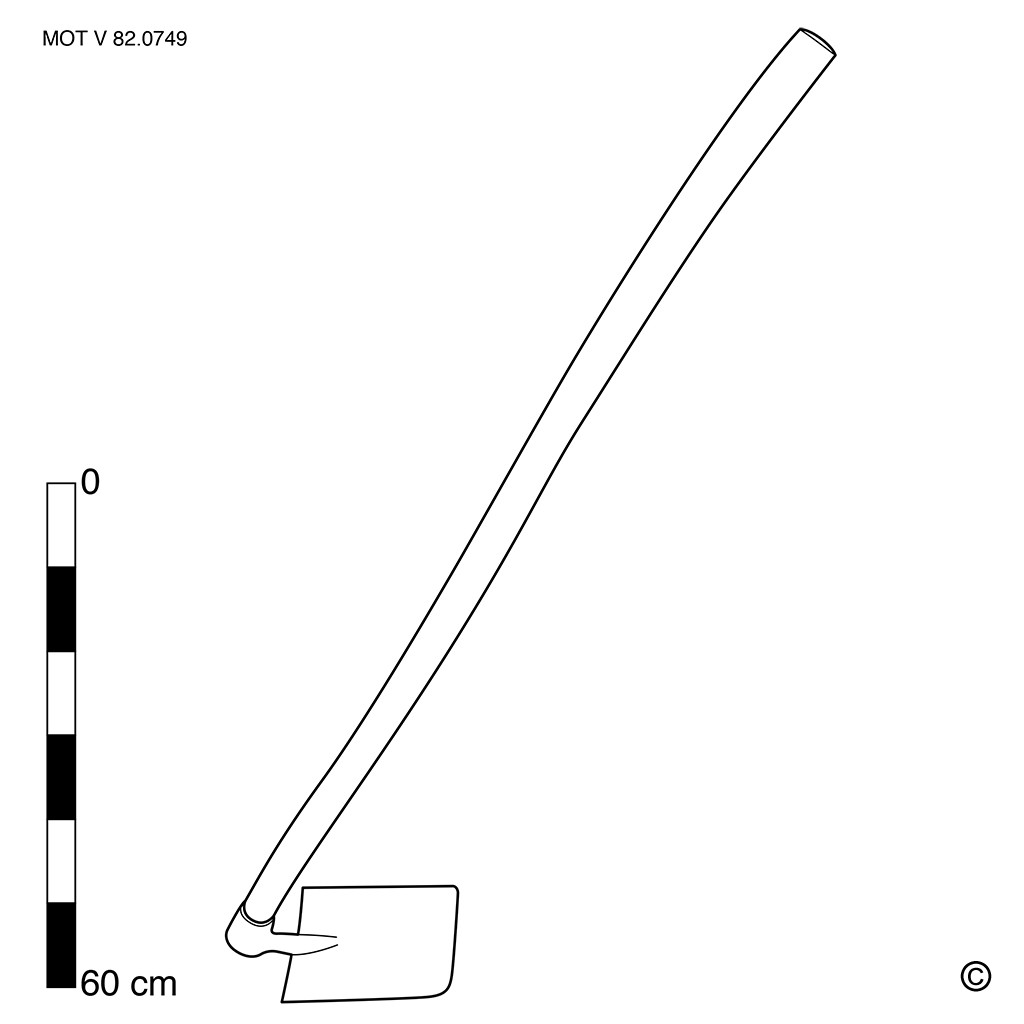
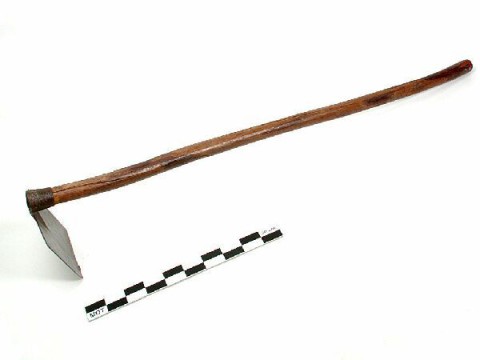
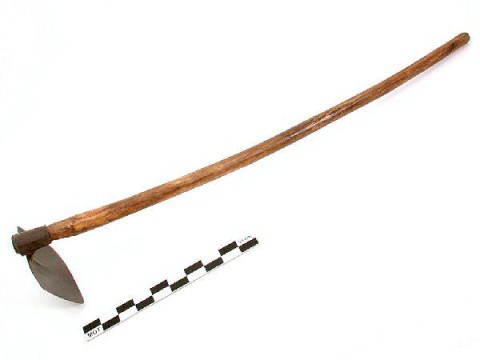
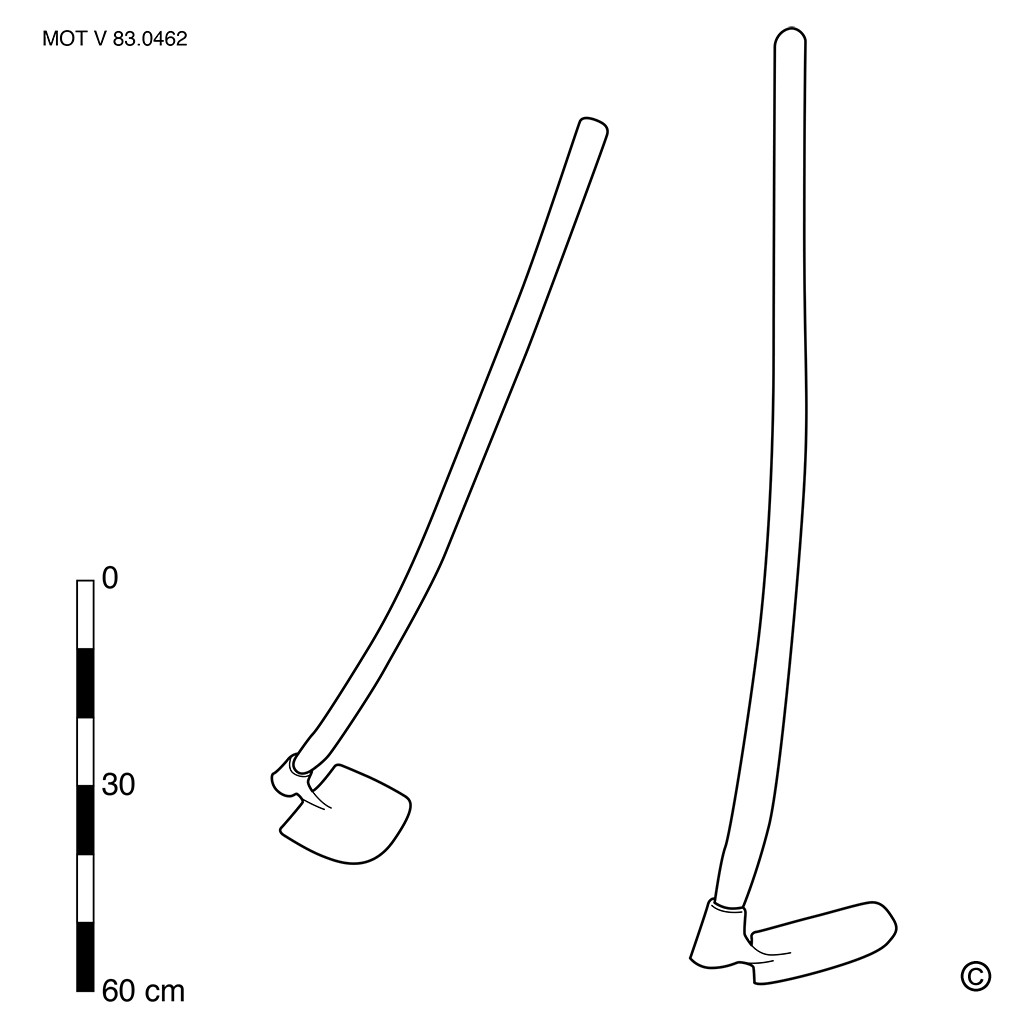
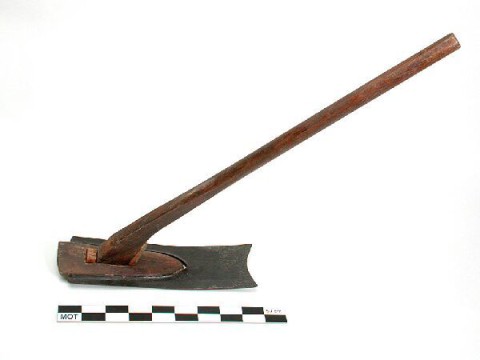
Hoe from Japan
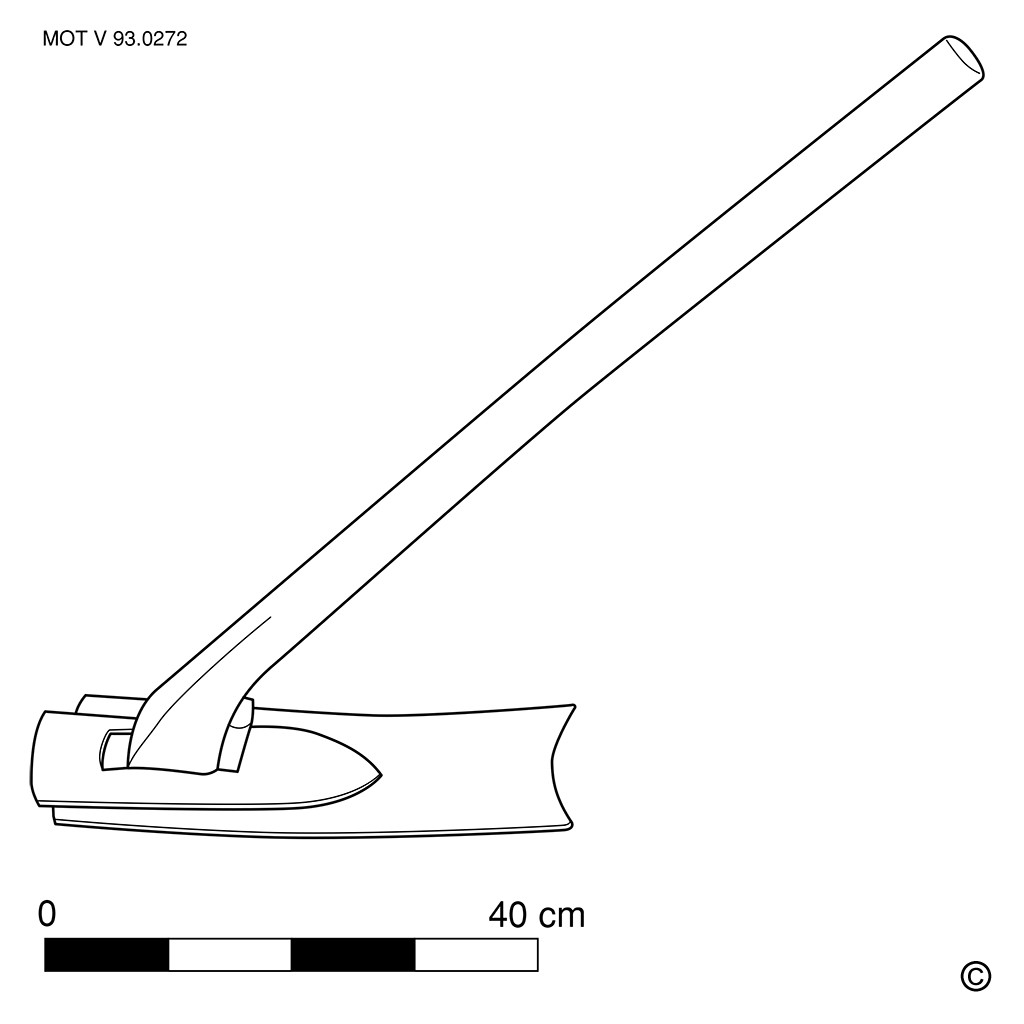
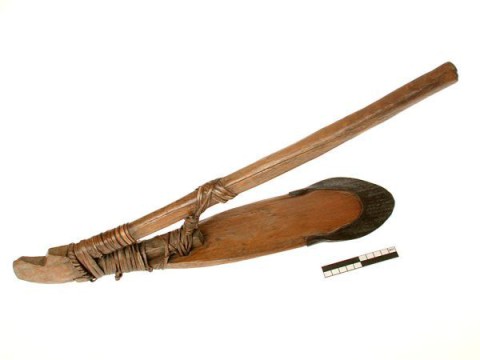
Hoe from Senegal
